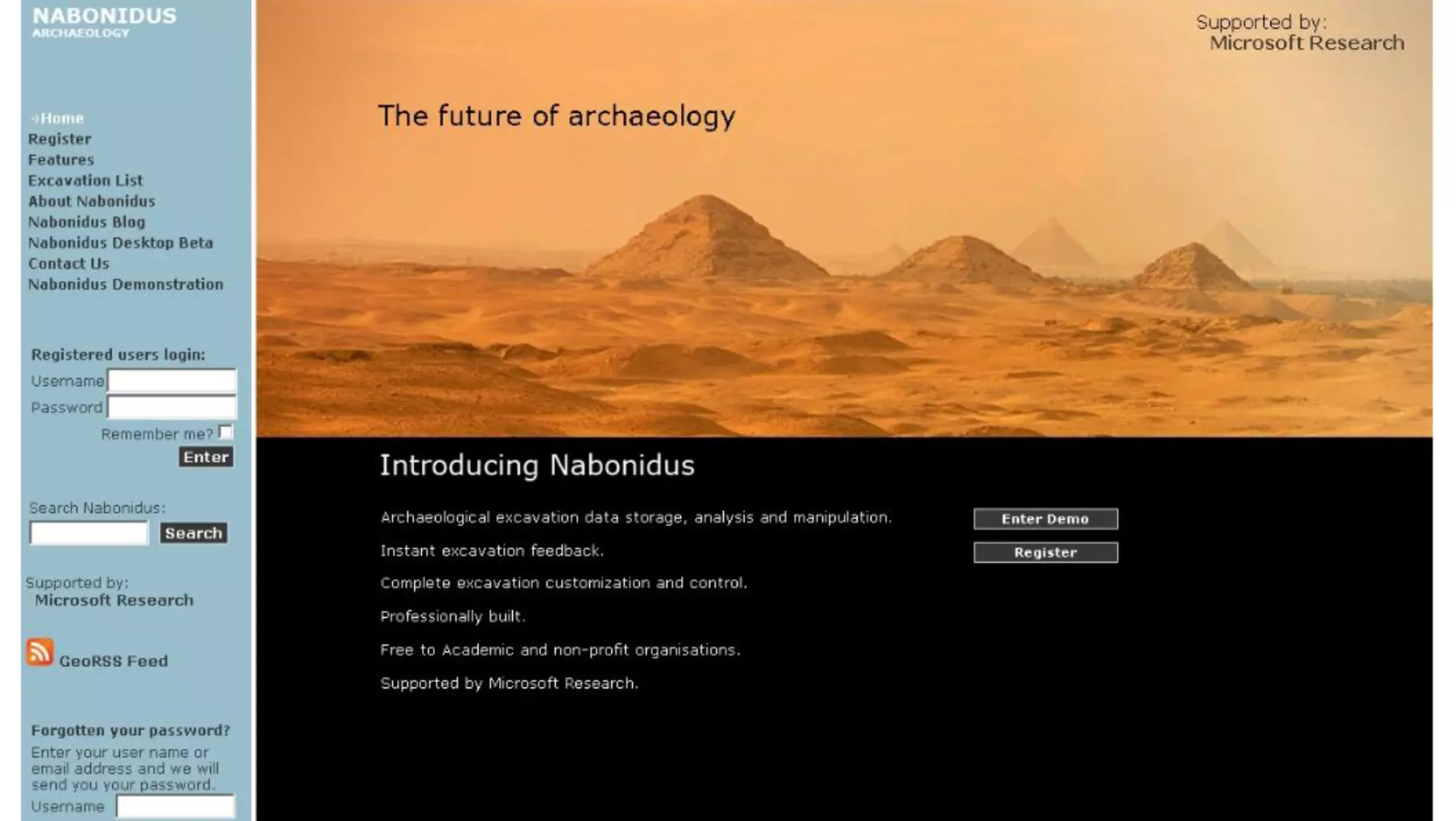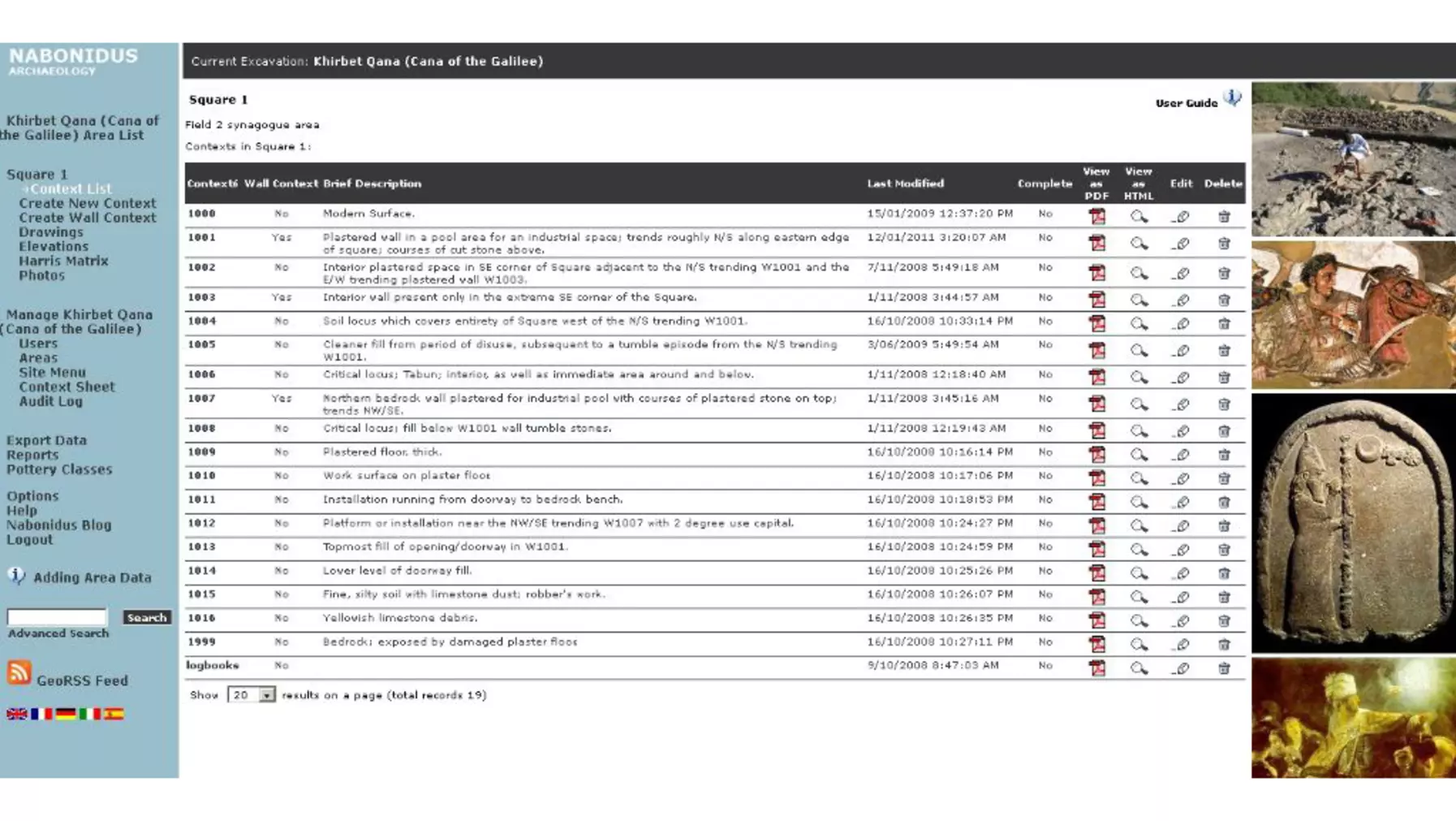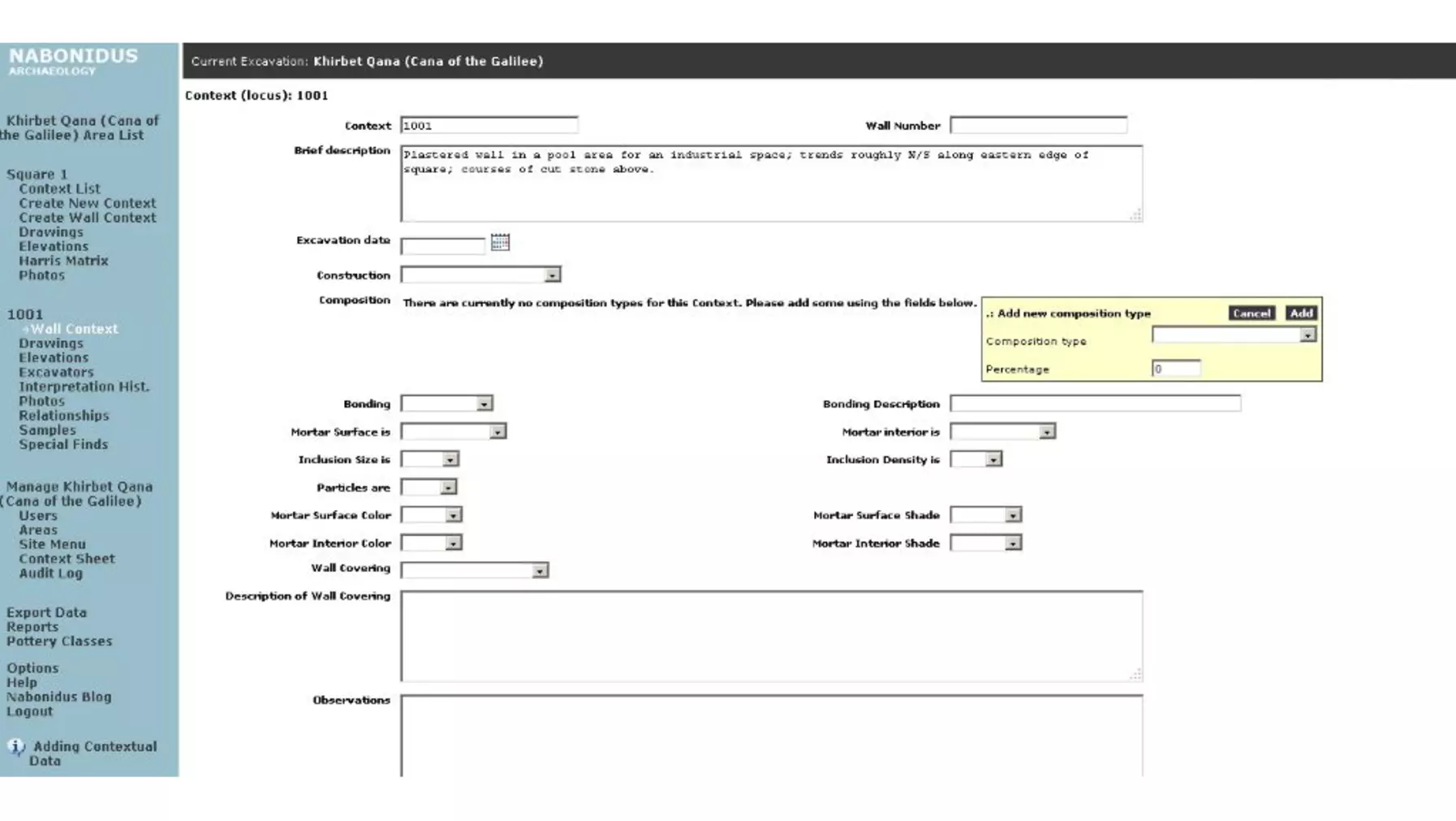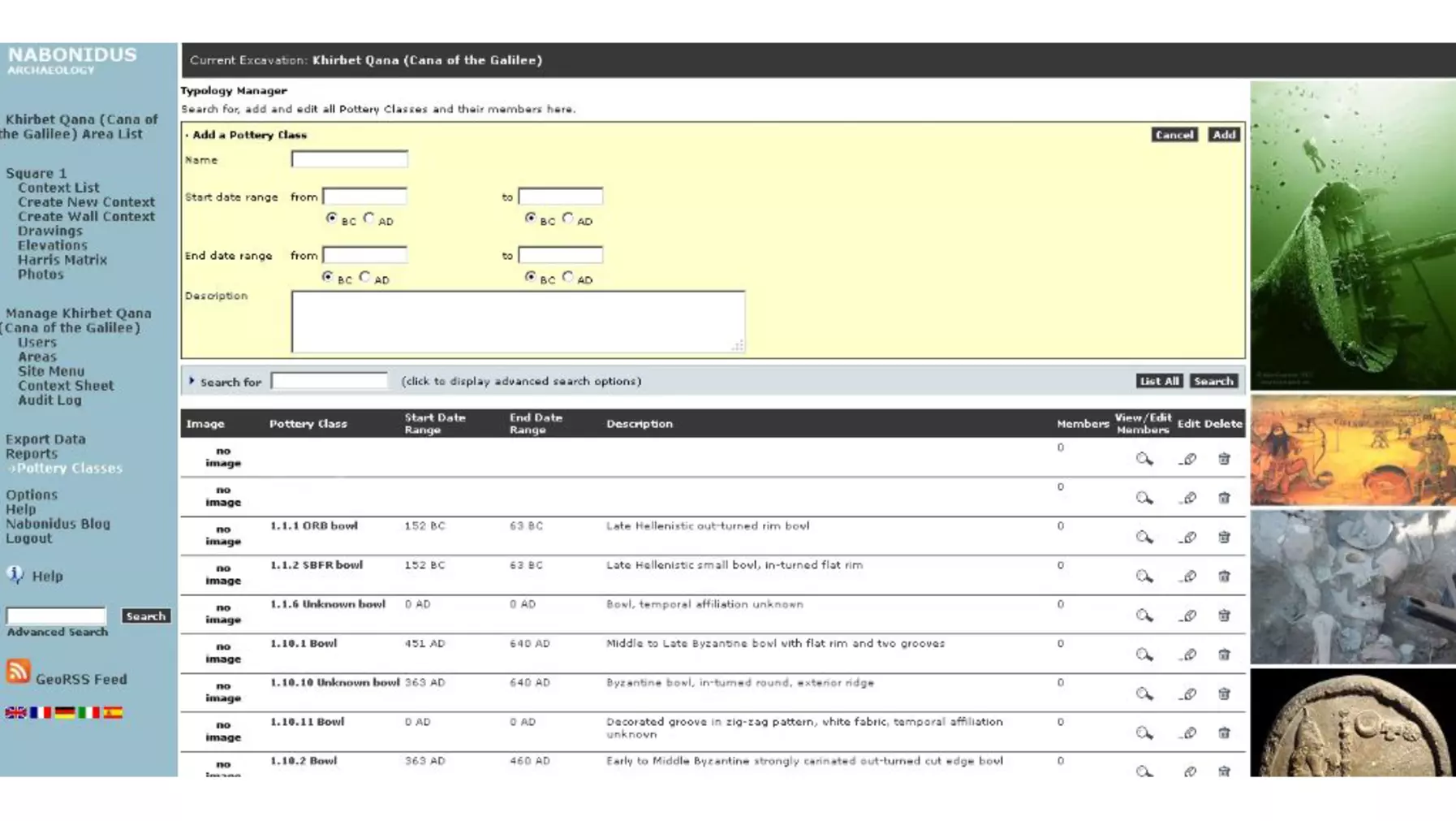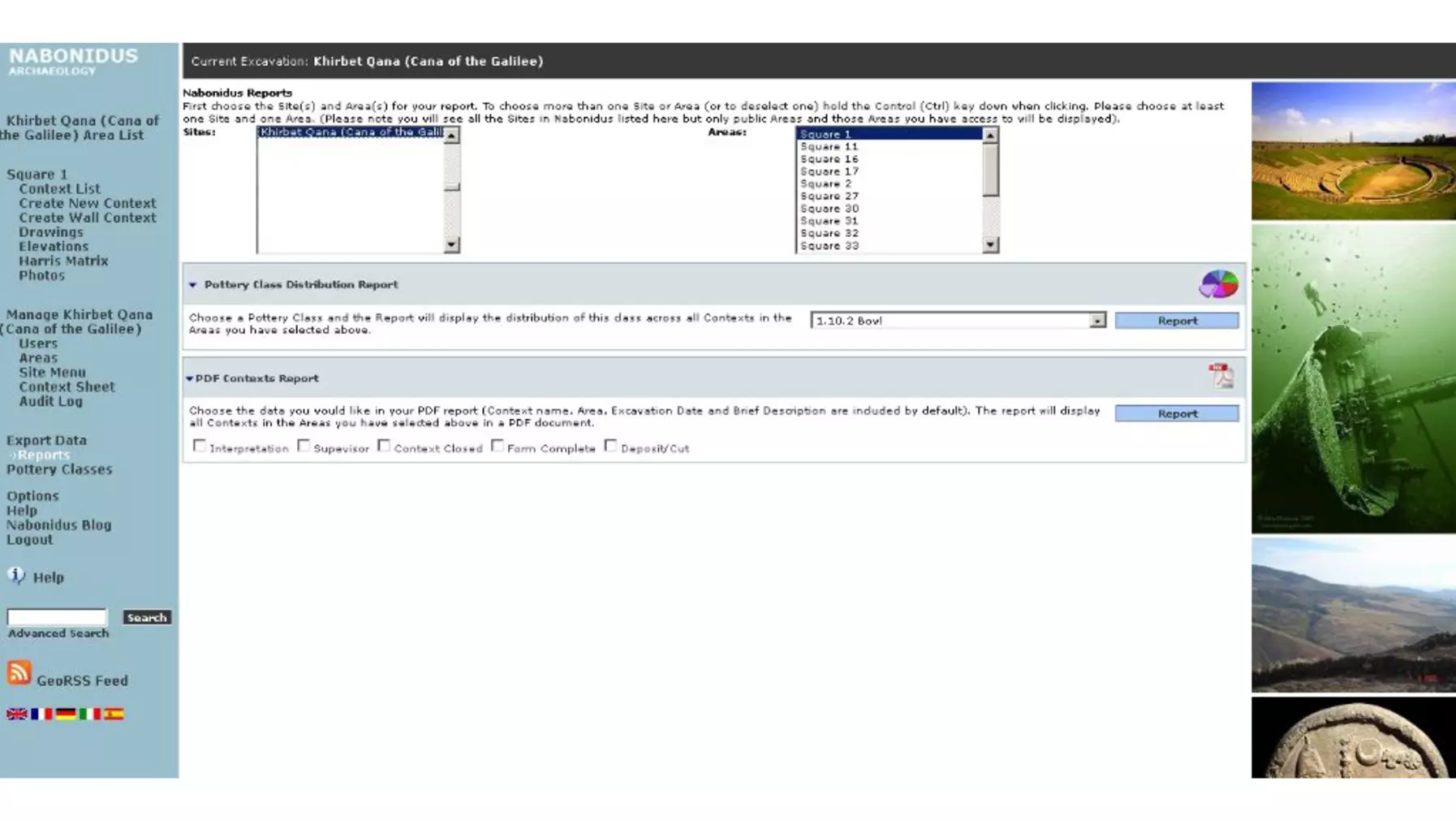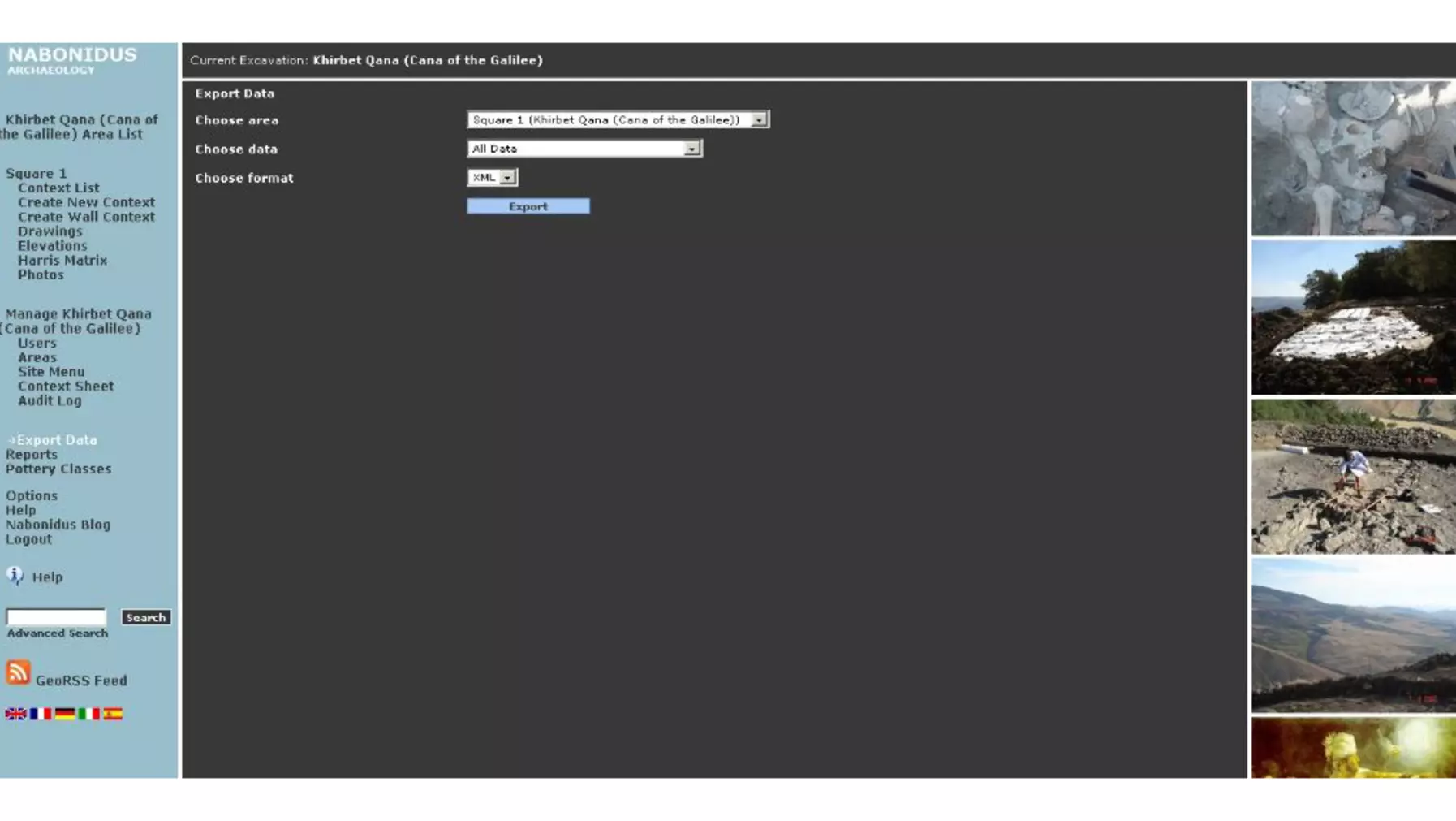Nabonidus is a web application designed for archaeological excavation data storage, sharing, manipulation and analysis. It aims to revolutionize the way archaeologists collect, analyze and interpret excavation data.
If you would like to try out the Nabonidus database system first-hand, please check out the project's home page at Nabonidus.org.
Access to the Nabonidus databases for the Khirbet Qana and Chersonesos Archaeological Projects and the Galilee Survey Project is available via secure Username and Password upon request to the website administrator at Contact Puget Sound.
In the past, one of the most difficult and controversial aspects of recording archaeological projects and material finds has been what system and format database management should take. It is not uncommon to see archaeological projects go through many different database formats over the years as archaeologists strive to find the best way to represent their data in the most useful way possible.
The Nabonidus online database system offers answers to the most common stumbling-blocks and difficulties experienced by archaeologists in seeking to best represent their data.
As an online database system, as well as an imaging and documentation repository, Nabonidus is able to efficiently store all of a project's field, finds and site data in a central place, accessible from anywhere in the world with an internet connection.
The main problem with archaeological databases in the past, and still today, is that they're only accessible by one person, on one computer at a time, and all entries to that database have to be done in that one master database or the entry results will not show up across other versions of the database on other computers (relational links are possible, but still the people doing the data entry must do so, one at a time, in the master database, or suffer the inconvenience and potential for error of merging multiple databases from different sources after-the-fact).
This problem is circumvented by using the Nabonidus database system, as it represents a single, online location for a master database which is automatically updated in real-time by any number of users, anywhere in the world. Not only can multiple people make data entries in real-time (and see the results of everyone else’s data entry at the same time), but other people can access and analyse the data in real-time as well, even while data entry is taking place. This means that (with an internet connection) someone in the field can be entering current site data at the same time as someone else is looking at that data (and all previous archived data) from an institute thousands of miles away.
The developers and technicians behind the Nabonidus system are well aware that internet connections are not always available in the field, and as such are working on a stand-alone version of the system in which data can still be entered into a PocketPC, laptop, netbook or tablet version of Nabonidus, and then later, when an internet connection is available, the stand-alone database can be uplinked to automatically update the master online database on the Nabonidus website.
Not only does the Nabonidus online system make all of the data readily available to researchers, anywhere in the world, at any time, but it also compliments the spatial visualization of data using GIS representation in systems like the user-friendly and widely-distributed Google Earth and Google Map.
The Nabonidus online database system can be specifically and individually tailored to meet any project's archiving, representation and analysis needs, and keep that data stored securely, with different levels of secure access as the project administrators see fit, from private full-editing capabilities to view-only public access.
Not only is Nabonidus one of the easiest and most user-friendly database systems ever devised specifically for archaeological applications, but it's also free for use by any excavation or project run by a university or not-for-profit organisation. This makes it even more desirable for any archaeological project, as budget considerations are always looming, and database systems of this kind can easily make-or-break any project.
With data input either via the online website or importable via external spreadsheets and databases, such as Microsoft Access; search engines within Nabonidus to find and analyze any form of data; and data output in the form of PDFs, pie-charts and even Harris Matrices, Nabonidus stands as an excellent one-stop repository for any size archaeological project.
Try out a fully functional excavation demo at Nabonidus.org see the advantages of this cutting-edge database system, then swing by the Nabonidus Blog and keep up-to-date with the latest Nabonidus developments.
The future of archaeology is here.
- Chris Mundigler, InCA Research Services
